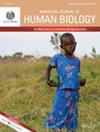Body Composition and Geographical Altitude in Newborns From the Province of Jujuy (Argentina)
Abstract
Aim
Knowledge of neonatal body composition in high-altitude populations is insufficient. To estimate Fat Mass (FM), Fat Free Mass (FFM), and Body Fat percentage (BF%) in Jujuy newborns (NB) using the weight/length (W/L) ratio and its relationship with maternal, fetal, and environmental characteristics.
Method
Data were obtained from 47 598 mother/child pairs recorded in the Jujuy Perinatal Information System (SIP) between 2009 and 2014, including NB and maternal weight, length/height, gestational and maternal age, educational, nutritional, and marital status; birth interval; maternal surname, and planned pregnancy. The prevalence of unsatisfied basic needs (% UBN) was determined based on the mother's place of residence. The data were divided into two groups: highlands (HL > 2500 masl) and lowlands (LL < 2500 masl). W/L, FM, FFM, and BF% centiles were calculated using GAMLSS LMS in R and compared with INTERGROWTH-21st. ANOVA and Chi-squared tests were applied as needed. Statistical associations between the response variables FM, FFM, and BF% and maternal and environmental variables were tested using GAMM.
Results
FM and BF% were significantly higher in females and in LL, while the opposite was true for FFM. The three indicators differed according to maternal nutritional status and age, parity, pregnancy planning, prematurity, birth size, geographical altitude, surnames, and UBN. GAMM showed that gestational age, sex, birth size, UBN, and surnames are associated with FM, FFM, and BF% at both altitudinal levels.
Conclusions
The body composition of Jujuy NB varies with geographical altitude, NB characteristics, ethnicity, and socioeconomic conditions.

 求助内容:
求助内容: 应助结果提醒方式:
应助结果提醒方式:


